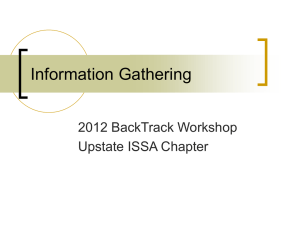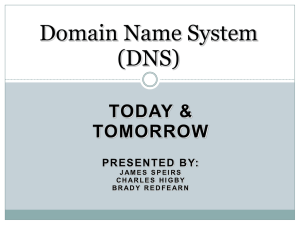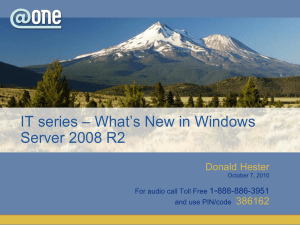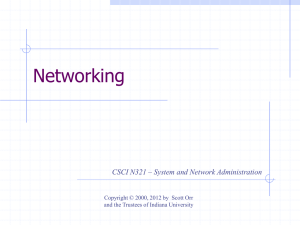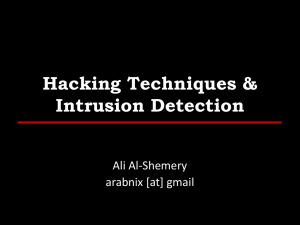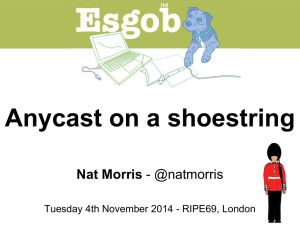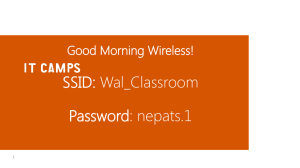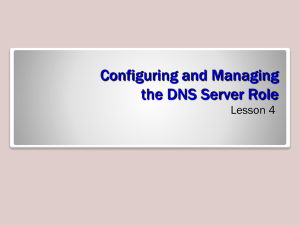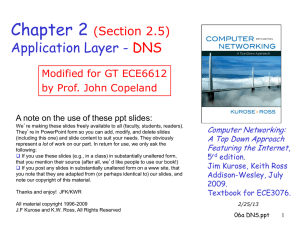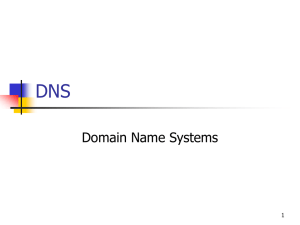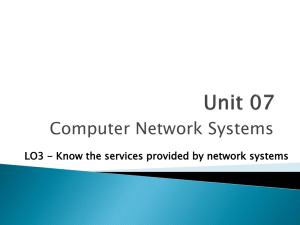adv-dns-mod3-stealth
advertisement
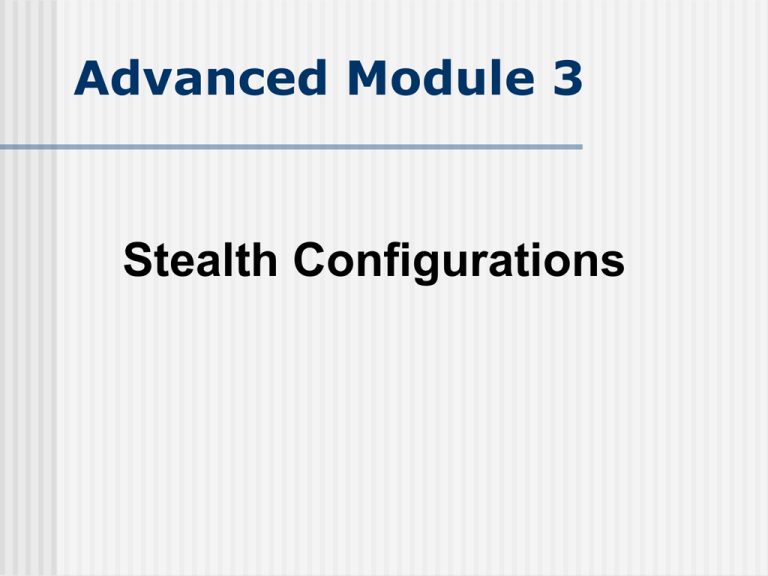
Advanced Module 3
Stealth Configurations
DNS Stealth Configurations
Stealth (aka DMZ, Split)
Definition:
Public and Private Resources (IP addresses
and services)
Separation of Public and Private
Protection of DNS Zone files
DNS - Stealth Configuration
DNS Stealth Configurations
Same Domain Name - Public and Private
zone files
Hidden Master
Slave Only Configuration
Secure Zone Transfers from Hidden Master
Private Clients want to query
Non-standard ports (ZT and Query)
Use of BIND9's view clause
NAT Gateway?
DNS - Hidden Master
DNS - Hidden Master
A Registered domain needs two or more
Name Servers
Resolver start (1) with Root/TLD and use
referrals (delgation)
Referrals (2) always go back to the
Resolver
Slaves (3) respond Authoritatively
Zone Transfers (4) - use IP/Crypto
controls with Non-standard ports
Master only visible to slaves
DNS - Stealth Configuration
DNS - Internal Resolver
Public Servers (1) are slaves - only use
Public zone files
Master (2) uses non-standard port Zone
Transfer with crypto (TSIG)
Private DNS (3) has only private zone
files
Users need Recursive queries for normal
web access
Public (Recursive) Queries (4) go thru
firewall/NAT
DNS - Stealth Configuration
options {
...
// Private DNS (3)
recursion yes;
allow-recursion {172.18/16;}; // cache access
};
// required zone for recursive queries
// transactions will pass through a classic firewall
zone "." {
type hint;
file "root.servers";
};
// zone clause - master for example.com
zone "example.com" in{
type master;
file “private/example.com”;
...
};
// required local host domain
// localhost reverse map
// reverse map for local address at example.com
// uses 192.168.254.0 for illustration
DNS - Stealth Configuration
options {
...
// Public DNS (1)
recursion no;
};
// zone clause - master for example.com
zone "example.com" in{
type master;
file “public/example.com”;
...
};
// localhost/reverse localhost
// maybe
DNS - Stealth Configuration
DNS - External Resolver
Public Servers (1) are slaves - only use
Public zone files but also provides Recursive
service to Private Clients
Master (2) uses non-standard port Zone
Transfer with crypto (TSIG)
Private DNS (3) has only private zone files
Users need Recursive queries for normal web
access
Public (Recursive) Queries (4) use a
Forwarding DNS (with non-std port) to DNS
(1)
DNS - Stealth Configuration
options {
...
// Private DNS (3)
recursion no;
};
// required zone for recursive queries
// uses stealth port 2053
zone "." {
type forward;
forward only;
forwarders {192.168.2.3 port 2053; 192.268.2.4 port 2053};
};
// zone clause - master for example.com
zone "example.com" in{
type master;
file “private/example.com”;
...
};
// required local host domain
// localhost reverse map
// reverse map for local address at example.com
// uses 192.168.254.0 for illustration
DNS - Stealth Configuration
options {
...
// Public DNS (1)
recursion yes;
allow-recursion(10.0.0.3;}; // private forward DNS
listen-on port 53 {192.168.2.3;};
listen-on port 2053 {192.168.2.3;};
};
// zone clause - master for example.com
zone "example.com" in{
type master;
file “public/example.com”;
...
};
// normal hints zone
zone "." {
type hint;
file "root.servers";
};
// localhost/reverse localhost
// maybe
DNS - Using View Clause
A single DNS can be configured to support
both Private and Public capabilities
Maintains two logically separate views
Clients can connect to private or public
services
Does not need Firewall (?)
Vulnerable if filesystem compromise
Uses:
match-clients {ip list;);
Match-destinations {ip list;);
match-recursion-only {ip list;);
DNS - Bind9 View
DNS - Using View Clause
DNS Server (1) has public and Private views
Hidden Master (2)
Clients access Private side only for
Authoritative (3) and Recursive (4) queries
Private side issues Public (5) (Recursive
queries)
Server's Public view only answers public
queries
DNS - using View Clause
options { // Public/Private DNS (1)
...
recursion no;
};
view “private” {
match-clients {localnets;localhost;};
recursion yes;
allow-recursion {localnets;localhost;};
// zone is private
zone “example.com” {
type master;
file “private/example.com”;
...
};
// zone files for hints, localhost, local reverse map
};
view “public” {
match-clients {any;};
recursion no;
zone "example.com" in{
type slave;
file “public/example.com”;
...
};
// zone files for localhost
};
DNS - Using View Clause
views order is significant - match-client
{any;}; in the public view is an else
condition
Private cache is polluted with public data
Single server
Can be routed through firewall or not
Breaking of filesystem will allow reading of
private data
DNS - Admin security
Bind runs as root until it has assembled all
its files - permissions can be very tight
especially on included files
Files:
named.conf - contains sensitive information
especially where private views are involved
key files - always include (0600 root:wheel)
zone files - only private ones
log files - in shared public/private
rndc - think very carefully
Quick Quiz
Should a public DNS server support
recursion?
Must the master NS be defined when you
register a domain?
Name at least two statements that can be
used to select view users?
Does an Authoritative Server need a hints
zone clause?
Should key clauses ever defined in
named.conf?


